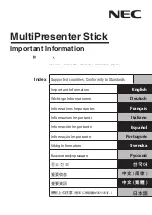
6 - 4
1) Error detection using a checksum
[Detection procedure]
The ASCII code for each data byte, from the processing code to the end of text (prior to the
checksum code), is added.
The final value of "
" is compared to the checksum code which is treated the same way. If the
two values are identical, the command is considered to be valid. If not, it is considered that an
error has occurred during transmission.
[Command]
:
Station No.
*
*
*
*
*
• • • • • • •
*
*
SC
SC CR
(H ) (L )
Header
(1)
Processing code (2)
Text (2)
Checksum code (4)
Terminator
[Response]
: Station No.
*
*
*
*
RC RC RC RC
*
• • • • • •
*
*
SC SC CR
H
• • •
• • •
(L )
(H ) (L )
Header
(1)
Termination code(3)
Text (2)
Processing code (2)
Terminator
Checksum code (4)
2) Creating a checksum code
The ASCII code for each data byte, from the processing code to the end of text
(prior to the checksum code), is added.
The lower 1 byte of this sum is divided into the upper 4 bits and the lower 4 bits. The hex
character (0 to F) is converted to the ASCII code for that character.
Note
: When detection using checksum is not required at IV side, set @(ASCII:40(H)) in the
command's checksum code (SC(H), SC(L)).










































